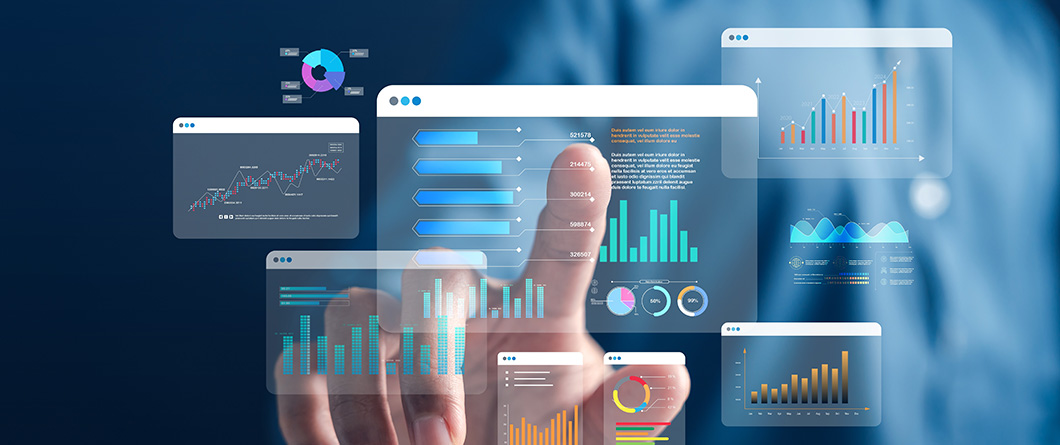
Marketing Strategy Essentials for 2026: What Every CMO Needs to Know About AI, Personalization & ROI
As the calendar turns to 2026, marketing leaders stand at a critical juncture, facing a landscape that rapid technological advancements and evolving consumer expectations have fundamentally reshaped. The traditional role of the Chief Marketing Officer (CMO) has undergone a profound transformation, moving beyond brand stewardship to become a central orchestrator of sophisticated AI marketing strategies, a primary driver of transformational business growth, and a meticulous demonstrator of Return on Investment (ROI) through data-driven precision.
The days of relying on legacy marketing tactics are unequivocally over. The modern CMO is no longer just a trend follower, but a strategic innovator, expected not only to understand but also master emerging marketing technologies (martech). This includes a deep dive into artificial intelligence (AI) and machine learning (ML) to unlock unprecedented levels of efficiency and insight. Further, a non-negotiable aspect of this new era is the implementation of robust, privacy-first strategies that build consumer trust in an increasingly data-conscious world. At the heart of it all lies the imperative to deliver hyper-personalized experiences at scale, moving beyond broad segmentation to individual-level engagement that resonates deeply with each customer.
The stakes for CMOs and their organizations have never been higher. The ability to adapt, innovate, and execute in this dynamic environment will directly correlate with market leadership and sustained growth. Simultaneously, the opportunity for brands and agencies that successfully navigate these profound changes has never been greater. Those who embrace AI as a strategic partner, prioritize data ethics, and consistently deliver personalized value will not only survive but thrive, cementing their positions as industry leaders in the competitive landscape of 2026 and beyond. This requires a proactive approach to skill development, organizational restructuring, and a relentless focus on measurable outcomes.
The CMO Landscape in 2026: Navigating AI, Budget Pressures, and ROI Expectations

Today’s CMOs face mounting pressure to align marketing performance with revenue growth, not just brand visibility. Competition intensifies as brands rush to harness the disruptive power of martech, while economic uncertainty demands strict accountability and real-time reporting.
CMOs must:
- Shift from reactive campaigns to full-funnel, omnichannel strategies rooted in data and AI.
- Navigate privacy laws, sharpen first-party data strategy, and consolidate their martech stack.
- Elevate marketing ROI measurement to boardroom standards, building cross-functional bridges with CIOs, CFOs, and sales leadership.
- Leverage marketing agency partnerships for strategic guidance, talent flexibility, and fast technology adoption.
In 2026, marketing success hinges on two essentials: AI-driven strategy and measurable, executive-level accountability.
Tasks that once took days now take minutes, with the biggest gains seen in repetitive content adaptation and large-scale production. Automation ensures consistency and scale, while human oversight preserves brand voice and accuracy. Frameworks requiring team review and approval of all AI-generated content safeguard legal compliance, tone, and brand integrity in a rapidly evolving landscape.
Marketing Automation with AI: Personalizing Email, Ads, and Website Experiences at Scale

The era of “set and forget” automation is over. AI-fueled platforms dynamically personalize omnichannel experiences—across ad delivery, email sequences, and web content—in real time, according to user signals and behaviors.
Key capabilities include:
- Predictive analytics for next-best actions, converting intent signals into personalized offers instantly.
- Triggered campaigns powered by behavioral data, enabling hyper-personalization at every touchpoint.
- Automated audience segmentation and lifecycle journey management.
Brands that fully embrace AI for marketing automation achieve productivity gains of 5-15% in their marketing spend, often reallocating resources to innovation rather than operations. Success, however, depends on disciplined integration: avoid siloed pilots, unify journey data, and ensure interoperability with marketing technology (martech) platforms and human teams.
This strategic shift enables companies to move beyond repetitive tasks and allocate more time and resources to creative campaigns, new product development, and deeper customer engagement initiatives. However, the accurate measure of success in AI adoption is not just about cost savings; it’s about the enhanced capabilities and insights that AI brings to the marketing function.
AI should augment, not replace, human creativity and strategic thinking, fostering a collaborative environment where technology and human expertise work in tandem to drive superior marketing outcomes. This integrated strategy enables a continuous feedback loop, where AI-driven insights inform human decisions and human insights refine AI algorithms, resulting in ongoing improvements in marketing effectiveness.
First-Party Data Strategy: Building Customer Data Platforms Without Third-Party Cookies

As third-party cookies disappear, brands are rethinking how they collect and connect customer data. The key is building a first-party data strategy that prioritizes transparency and value exchange. Start by defining what business outcomes you’re solving for—higher retention, better personalization, or improved measurement—and then determine which data points truly support those goals. A purpose-built Customer Data Platform (CDP) should serve as the hub, unifying behavioral, transactional, and consent-based data across web, mobile, and in-store touchpoints. Companies that create meaningful ways for customers to share information—through loyalty programs, opt-in quizzes, or preference centers—see tangible benefits. Research shows that brands delivering relevant, data-driven experiences achieve up to a 20% higher revenue and a 30% lower acquisition cost.
Once your CDP foundation is in place, the focus shifts to activation: using segmentation, predictive modeling, and privacy-first personalization to turn insight into action. This process works best when guided by clear KPIs, rigorous governance, and an agile mindset that allows for continuous optimization. According to Boston Consulting Group, first-party data isn’t just a replacement for third-party—it’s a superior asset that fuels smarter, more sustainable growth. Brands that invest now will not only future-proof their marketing but also earn lasting consumer trust in an increasingly privacy-conscious world.
Personalization Tactics: Dynamic Content, Behavioral Triggers, and Preference Centers

Personalization, powered by AI, has been proven to directly increase business revenue. According to McKinsey, the value of getting personalization right or wrong is multiplying.
In 2026, leading personalization strategies include:
- Real-time adaptation of website and mobile app content, based on individual user histories, preferences, and micro-moments.
- Automated behavioral triggers—such as cart abandonment emails, product recommendations, or retargeting ads—are initiated by user actions.
- Preference centers enable customers to specify their communication and product preferences, leading to increased satisfaction and decreased opt-outs.
McKinsey reports that 71% of consumers expect personalized interactions from the brands they engage with, while 76% feel frustrated when those expectations aren’t met. Businesses that master personalization see a 40% increase in revenue compared to their competitors. In today’s digital landscape, personalization isn’t just an advantage; it’s essential for staying in the game.
Multi-Touch Attribution Models: Tracking Customer Journeys Across Digital and Offline Channels

As the digital ecosystem grows more fragmented, traditional last-click attribution no longer captures the complete picture of how marketing efforts influence purchase decisions. The CMOs leading in 2026 are moving beyond outdated metrics toward holistic, AI-powered attribution strategies that reveal how every touchpoint contributes to conversion and retention.
Modern measurement frameworks integrate multi-touch attribution (MTA) to map each stage of the buyer journey, from initial discovery on social to in-app engagement and even offline experiences. Layering AI-driven analytics enables marketing leaders to pinpoint which interactions actually move customers closer to purchase, redistributing budget toward the most impactful channels in real-time.
Beyond attribution, forward-thinking brands are also embracing advanced marketing mix modeling and incremental lift testing to understand the combined impact of paid, earned, and owned efforts. This approach transforms performance data into a living system, one that continually learns, predicts, and adapts based on new behaviors and campaign outcomes.
For CMOs, the result is clear: a more innovative, more accountable marketing strategy that ties every investment to measurable business outcomes.
Marketing Budget Allocation: Data-Driven Frameworks for Channel Mix Optimization

2026 demands data-driven frameworks for marketing budget allocation, far beyond annual “gut feel” planning. CMOs and CFOs are rethinking investment strategies based on:
- Centralized dashboards tracking campaign performance, CAC (customer acquisition cost), CLV (customer lifetime value), and incremental revenue.
- Predictive models for scenario planning, enabling dynamic rebalancing across media, content, and technology investments in response to market changes.
- Continuous experimentation, optimizing spend in real time, and eliminating low-ROI activities.
In capital markets, AI-driven marketing tools optimize budget allocation across channels to maximize ROI. By continuously analyzing performance data and adjusting spend in real time, these models help CMOs boost marketing ROI by as much as 25% through smarter, data-backed distribution.
MarTech Stack Consolidation: Evaluating, Integrating, and Optimizing Marketing Technology
Many CMOs today are weighed down by “martech bloat”—a tangled mix of tools and platforms that promise innovation but often create more confusion than clarity. As marketing technology continues to grow more complex, success in 2026 will depend on a more innovative, more streamlined approach to managing it all.
That process starts with regular martech audits—a structured review of every tool in your stack to see what’s actually driving value. These audits help uncover overlaps, eliminate unused subscriptions, and identify opportunities to connect systems that currently operate in silos. From there, CMOs can focus on consolidating around the tools that truly matter—those that support customer data, campaign management, and performance measurement—ensuring everything works together toward one clear vision.
Just as important as the tools themselves is how teams use them. Close collaboration between marketing, IT, and data teams ensures smoother integrations, faster problem-solving, and shared accountability for results. When everyone is aligned, technology becomes an enabler of strategy—fueling personalization, automation, and compliance rather than complicating them.
In this new era, success isn’t about having the most enormous tech stack—it’s about simplifying intelligently. By consolidating platforms, encouraging cross-functional teamwork, and prioritizing systems that integrate seamlessly, CMOs can turn martech from a source of friction into a competitive advantage that drives real ROI and long-term growth.
Proving Marketing ROI to CFOs: Dashboards, Metrics, and Executive Reporting Best Practices

In today’s marketing environment, demonstrating clear ROI is no longer optional—it’s foundational. Smart CMOs are building real-time dashboards that aggregate performance data across channels and tie it directly to business outcomes such as revenue, cost savings, or asset reuse. For example, firms that leverage marketing automation report an average return of $5.44 for every $1 spent, or a 544% ROI.
At the same time, companies using AI-driven personalization have achieved a 10-30% increase in marketing ROI and a reduction of up to 50% in customer acquisition costs.
But the numbers only matter if they translate into actionable insight. That means moving beyond last-click or impression-based metrics to multi-touch attribution models that connect leads, conversions, and pipeline back to both campaign and creative investment. Research shows that only about 60% of marketers feel confident in their ability to demonstrate ROI. To bridge that gap, CMOs must treat their measurement systems as strategic assets—not just reports. Dashboards should track revenue, lead volume, conversion velocity, and reusable assets, enabling marketing to become measurable, agile, and accountable. With this kind of setup, AI-powered automation stops being a cost center. It becomes a high-yield investment—enabling content publication in minutes, reducing time and cost, and freeing teams to focus on strategic growth instead of repetitive tasks.
Building Cross-Functional Alignment: Collaborating with CIO, CFO, and Sales Leadership
The most successful marketing strategies for 2026 are planned and measured across functions, not in silos. CMOs must:
- Partner with CIOs for data integration and privacy, CFOs for quantifiable ROI, and sales for seamless lead flow.
- Share KPIs across teams, with clear ownership and regular communication.
External partners, particularly agencies, are more crucial than ever. Agencies serve as vital conduits, effectively building bridges between an organization’s current state and its aspirational future. They are instrumental in providing specialized external expertise, which is often a critical factor in fast-tracking transformation initiatives.
This external perspective brings fresh insights, diverse skill sets, and an objective viewpoint that internal teams may not always possess. By leveraging an agency’s deep knowledge and experience across various industries and technological advancements, companies can navigate complex challenges, implement innovative solutions, and accelerate their journey towards achieving strategic objectives with greater efficiency and effectiveness.
Creating Your 2026 Marketing Strategy Roadmap: Priorities and Implementation Timeline

A successful marketing roadmap is more than a static plan—it’s a living framework that connects vision to measurable growth. For CMOs, this means translating strategic intent into agile execution, guided by clear objectives and real-time insights. The most effective leaders strike a balance between immediate wins and long-term scalability, leveraging AI-driven tools and data intelligence to drive both short-term results and sustainable brand evolution.
At Evok Advertising, we help brands structure this process through integrated marketing strategy and campaign execution designed to adapt as the market shifts. Implementing well-defined quarterly sprints with clear KPIs, ownership, and accountability ensures progress remains measurable while maintaining flexibility to pivot when business priorities change.
Each initiative within these sprints should incorporate authoritative, data-backed content that strengthens both traditional SEO and emerging Generative Engine Optimization (GEO) performance. By consistently producing high-quality thought leadership assets—such as those featured in our marketing insights blog—brands not only enhance visibility across search and AI-driven discovery platforms but also reinforce their credibility and foster consumer trust.
When executed strategically, this roadmap transforms marketing from a reactive function into a predictive engine for growth, aligning every campaign, channel, and data point under one cohesive vision for success.
Why CMOs Partner with Marketing Agencies to Navigate Complexity and Drive Growth
Today’s CMOs leverage agency partnerships for deep expertise, scalable talent, and cutting-edge technology, especially as marketing technology (martech) and analytics continue to evolve at a record pace.
Agency partners:
- Provide AI and automation implementation frameworks grounded in industry best practices.
- Deliver creative and content strategies that maintain brand differentiation as AI scales production.
- Fill capability gaps, drive innovation, and support dynamic resource allocation during transformation efforts to enhance overall performance.
At Evok Advertising, we help marketing leaders harness these advantages through an integrated marketing strategy and execution that aligns data, technology, and creative under one cohesive framework. Our team has guided national and regional brands through AI adoption, helping them translate automation into measurable growth while protecting brand authenticity.
Unlike in-house teams, agencies are often better positioned to leverage AI for advanced measurement applications such as synthesizing performance data and conducting marketing mix modeling. With broader access to cross-industry benchmarks, enterprise-level analytics infrastructure, and a multidisciplinary team, Evok empowers CMOs to connect every marketing action to business impact. In fact, agencies are, on average, 57% more advanced than advertisers in applying AI to campaign measurement—turning complex datasets into actionable insights that drive smarter, more efficient marketing decisions.
FAQs: What Are the Most Effective AI Marketing Strategies for 2026?
In 2026, essential AI marketing strategies include predictive analytics for audience segmentation, retrieval-augmented content generation, and automation for campaign optimization. AI is also redefining creativity. Over half of marketers (51%) report that AI reduces production time, 49% say it enables greater content scale, and 46% credit it with enhancing brainstorming and idea generation.
The real opportunity lies beyond simply doing more: it’s about creating the time and freedom for deeper thinking, faster iteration, and more inspired creative breakthroughs.
How Should CMOs Measure Marketing ROI in 2026?
CMOs calculate marketing ROI using a comprehensive formula: (Direct Revenue + Cost Savings + Reusable Asset Value + Learning Effect) / Total Investment. This approach, recommended by leading authorities, connects marketing spend to enterprise value, not just campaign performance metrics.
What Is First-Party Data Strategy and Why Is It Critical?
A first-party data strategy is the methodical approach to gathering and utilizing customer data directly from your audience. This data is “owned and consented,” meaning it’s collected directly by your brand from your own platforms and with the explicit permission of your customers. It encompasses all interactions across various brand touchpoints, including website visits, app usage, purchase history, email engagements, and customer service interactions.
The increasing obsolescence of third-party cookies, driven by privacy concerns and browser restrictions, has elevated first-party data from a desirable asset to an absolute necessity. It forms the bedrock for highly effective personalization efforts, allowing brands to deliver tailored experiences, relevant content, and targeted offers that resonate deeply with individual customers. Beyond personalization, a robust first-party data strategy is crucial for ensuring regulatory compliance with evolving data privacy laws, such as GDPR and CCPA, as it emphasizes transparency and user consent. Furthermore, it provides a significant competitive advantage, enabling brands to understand their audience more intimately, predict future behaviors, and make data-driven decisions that foster stronger customer relationships and drive business growth.
To thrive in this evolving landscape, innovative brands are making substantial investments in key areas. This includes developing robust consent management platforms that empower customers with control over their data, ensuring transparency in data collection practices, and building sophisticated predictive modeling capabilities. These models, built upon the rich foundation of first-party data, allow businesses to anticipate customer needs, identify potential churn, and optimize marketing spend for maximum return on investment. Ultimately, a well-executed first-party data strategy is not just about data collection; it’s about building trust, fostering loyalty, and securing a sustainable competitive edge in a privacy-centric world.
What Performance Metrics Define Success in AI Marketing?
Metrics like Customer Acquisition Cost (CAC), Customer Lifetime Value (CLV), and Marketing ROI go beyond surface-level performance; they tie your marketing strategy directly to revenue outcomes. Unlike vanity metrics such as impressions or clicks, these indicators provide actionable insights that help you make smarter, data-driven decisions, justify your marketing investments, and continuously optimize campaigns for sustainable growth.
Whether you’re assessing your current agency’s impact, considering an in-house shift, or exploring a new digital marketing partner, a deep understanding of revenue-focused metrics is essential. The right agency should not only track these KPIs but also offer transparent reporting and clear proof of ROI. This guide will help you evaluate marketing effectiveness with confidence and ensure your efforts are driving real business results.
Key Takeaways:
- Revenue metrics such as Marketing ROI and CLV reveal the direct financial impact of your marketing efforts.
- Evaluating both performance volume and cost efficiency offers a complete picture of success.
- Ongoing measurement empowers smarter decisions, stronger campaigns, and measurable revenue growth.
A Playbook for CMO Success in 2026

The marketing landscape in 2026 will undergo a significant transformation, rewarding those who not only embrace but also master the integration of artificial intelligence (AI), advanced personalization, rigorous ROI measurement, and seamless cross-functional collaboration. Chief Marketing Officers (CMOs) who strategically align with these essential marketing principles, bolstered by robust, data-driven frameworks, cutting-edge integrated marketing technology (martech) stacks, and strategic agency partnerships, will be uniquely positioned to spearhead both digital transformation initiatives and substantial revenue growth for their organizations.
Evok Advertising is exceptionally well equipped to guide brands through this increasingly complex and dynamic environment. Our deep subject matter expertise, comprehensive suite of full-spectrum marketing services, and unwavering commitment to continuous innovation make us the ideal partner for forward-thinking CMOs ready to capitalize on the transformative potential of AI, harness the power of data-driven insights, and cultivate impactful omnichannel engagement strategies in 2026 and beyond. Ready to redefine your marketing strategy? Contact our team to start the conversation.